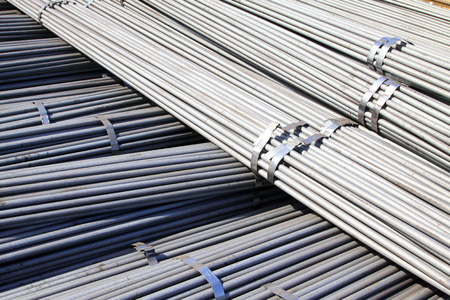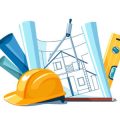Introduction: Steel & Iron Rods in Indian Home Construction
When it comes to building a house in India, the selection of construction materials is a crucial step that directly impacts the strength and durability of your dream home. Among these, steel and iron rods—commonly known as Saria—form the backbone of reinforced concrete structures. From high-rise apartments in Mumbai to independent homes in small towns, Saria is used everywhere to ensure structural stability against earthquakes, monsoons, and daily wear and tear. In the Indian context, homeowners and builders often face a fundamental question: should they buy steel and iron rods from local suppliers or opt for well-known branded manufacturers? This choice isn’t just about price—it also affects quality, long-term maintenance costs, and overall safety. With a diverse market ranging from small-town hardware stores to national giants like Tata Tiscon and JSW, understanding the difference between local and branded options is essential for anyone embarking on a home construction project in India.
Understanding the Types: TMT Bars, Mild Steel, and Iron Rods
When it comes to building your dream home in India, selecting the right type of steel or iron rod is a critical decision that impacts the safety and longevity of your structure. The Indian construction industry predominantly relies on three main types of rods for RCC (Reinforced Cement Concrete) structures: TMT bars, mild steel rods, and locally available iron rods. Each has its own unique properties, advantages, and local relevance.
TMT Bars (Thermo Mechanically Treated Bars)
TMT bars have become the backbone of modern Indian construction due to their superior strength, flexibility, and resistance to earthquakes. These bars undergo a special heat treatment process that gives them a tough outer surface and a ductile core—making them ideal for earthquake-prone regions like Gujarat or the North-East. TMT bars are available in various grades such as Fe415, Fe500, and Fe550, with higher numbers indicating greater strength. Most branded suppliers in India offer ISI-certified TMT bars that ensure quality and consistency.
Mild Steel Rods
Mild steel (MS) rods are composed of low-carbon steel and have been used traditionally in smaller constructions or as binding wires. While they offer decent ductility and ease of bending, they lack the corrosion resistance and tensile strength found in TMT bars. In rural or semi-urban areas where budgets are tight, MS rods might still be popular due to lower upfront costs; however, they may not meet IS code standards for major load-bearing elements.
Locally Available Iron Rods
In many parts of India, especially in Tier-2 and Tier-3 cities or villages, builders often source non-branded or locally manufactured iron rods from neighborhood suppliers. These rods can vary significantly in terms of quality, diameter uniformity, and chemical composition. While they can be budget-friendly and easily accessible, there’s often a compromise on structural integrity—especially if the rods do not comply with IS standards or lack proper certification.
Comparison Table: Common Rod Types Used in Indian Home Construction
| Type | Main Use | Strength | Corrosion Resistance | Common Grades |
|---|---|---|---|---|
| TMT Bars | RCC beams/columns/slabs | High | Excellent | Fe415/Fe500/Fe550 |
| Mild Steel Rods | Binding wires/light structures | Medium | Poor-Moderate | – |
| Local Iron Rods | General construction (low budget) | Variable (Low-Medium) | Poor (often no protection) | – |
Key Takeaway for Indian Home Buyers:
Selecting the right type of rod should be based on your structural requirements, seismic zone, budget constraints, and long-term safety concerns. While TMT bars from branded suppliers usually guarantee performance and compliance with IS standards crucial for urban projects or multi-storey homes, mild steel and local iron rods might suit temporary or low-load applications typical in some rural constructions. Always consult with your civil engineer before finalizing the material choice for your home’s skeleton.

3. Local Suppliers: Pros, Cons, and Local Market Practices
When it comes to sourcing steel and iron rods for home construction in India, many homeowners and contractors turn to local suppliers or hardware shops. The local market is a vibrant ecosystem, especially in tier-2 and tier-3 cities as well as rural areas. Let’s break down the practical aspects of buying from these sources.
Buying from Nearby Hardware Shops or Rebar Suppliers
Most Indian neighborhoods have at least one or two well-established hardware stores dealing in construction materials. These shops often maintain relationships with small-scale re-rolling mills or local manufacturers. For urgent requirements, last-minute shortages, or smaller projects, these outlets offer quick delivery—sometimes even same-day supply within city limits. Local rebar suppliers also provide cut-to-length services based on site measurements, which can help reduce wastage.
Bargaining Customs & Negotiation Tactics
Bargaining is an essential part of the buying experience in India’s local markets. Unlike fixed-price branded dealers, local hardware shops allow customers to negotiate rates—especially for bulk purchases. Discounts are usually offered based on order size, payment mode (cash often gets you better deals), and long-term customer relationships. It is common practice to get quotations from multiple shops before finalizing the deal; sometimes, even an informal “chai pe charcha” (discussion over tea) can lead to better pricing or additional perks like free transport up to your plot.
Risks & Benefits Based on Local Experience
The main benefit of sourcing from local suppliers is flexibility—they can cater to custom requirements and urgent deliveries without much paperwork. There’s also the advantage of supporting your local economy and easier after-sales support if issues arise with quality or quantity. However, there are risks: quality inconsistency is a frequent concern since not all local suppliers adhere to strict BIS (Bureau of Indian Standards) certification norms. In some cases, recycled or substandard steel may be mixed into consignments, affecting structural integrity. Experienced buyers recommend inspecting material personally or bringing along your contractor/engineer for verification.
Summary of Local Market Insights
In summary, purchasing steel and iron rods from local suppliers offers convenience and room for negotiation but requires vigilance regarding quality assurance. Always prioritize transparency in deals and insist on proper documentation wherever possible to safeguard your investment in your dream home.
Branded Rods: Quality Assurance & Certification
When it comes to constructing a home in India, the choice of branded steel and iron rods plays a crucial role in ensuring structural integrity and long-term durability. Leading brands like TATA Steel, JSW Steel, and SAIL have set benchmarks for quality through rigorous testing, certifications, and adherence to national standards.
Leading Brands and Their Market Reputation
Branded rods from these companies are well-known across India for their consistency, reliability, and advanced manufacturing processes. Here’s a quick comparison of major brands:
| Brand | Key Features | Market Presence |
|---|---|---|
| TATA Steel | Corrosion resistance, high tensile strength, uniformity | Pan-India; trusted for residential & commercial projects |
| JSW Steel | Earthquake-resistant, flexible grades, eco-friendly production | Strong in metro cities & tier-2 towns |
| SAIL (Steel Authority of India) | Government-backed, consistent quality, widely available | Cities & rural markets nationwide |
The Importance of ISI Marking & Certifications
The hallmark of genuine branded rods is the ISI mark (Bureau of Indian Standards). This certification ensures that the rods comply with IS 1786 (for TMT bars) and other relevant Indian standards. ISI marking guarantees:
- Strength: Meets minimum yield stress requirements—critical for load-bearing walls and slabs.
- Durability: Enhanced resistance to rust and environmental wear, ideal for India’s diverse climates—from coastal Kerala to dry Rajasthan.
- Uniformity: Consistent diameter and chemical composition throughout every batch.
- Traceability: Each lot can be traced back to its origin—important if any issue arises during or after construction.
What Branded Rods Assure vs. Local Alternatives
| Branded Rods (TATA/JSW/SAIL) | Local Supplier Rods | |
|---|---|---|
| Strength & Safety | Tested for earthquake/flood resilience; meets strict norms | No guarantee on load capacity or uniformity; may fail under stress |
| Lifespan/Durability | Anti-corrosive coatings; lasts decades with minimal maintenance | No anti-rust treatments; risk of early deterioration especially in humid zones |
| Technical Support & After-Sales Service | Helplines, site visits by engineers, material test reports provided on demand | No formal support; buyer bears all risk post-purchase |
| Cost Factor* | Slightly higher upfront cost but better long-term value due to fewer repairs/replacements required. | Certainly cheaper but can result in higher long-term costs due to repairs or structural issues. |
*Note: Prices fluctuate based on steel rates in India but the difference often pays off through peace of mind and resale value.
5. Factors Influencing Your Decision: Budget, Location & Site Conditions
When selecting steel and iron rods for your home construction in India, it is crucial to take several practical factors into account to ensure the safety and longevity of your structure.
Consider the Monsoon Impact
India’s diverse climate, especially the heavy monsoons in many regions, demands that you choose rods with high corrosion resistance. Branded rods often come with anti-rust coatings or superior quality assurance, which can be a wise investment if your site is prone to excessive rain and humidity. On the other hand, if you are building in a relatively dry region, local suppliers may offer adequate options at a more budget-friendly rate.
Soil Type Matters
The strength of your foundation depends significantly on the type of soil present at your site. For example, black cotton soil or loose sandy soils require robust reinforcement. Discuss with your engineer whether branded rods with higher tensile strength or custom-sized rods from local mills will be best suited for your location’s ground condition.
RCC Design Requirements
Your structural engineer will design the RCC (Reinforced Cement Concrete) framework based on load calculations and usage requirements. Some RCC designs specify particular grades or brands of rods to meet ISI standards and ensure uniformity. In such cases, using branded steel may not be just a preference but a necessity.
Project Scale & Budget Constraints
If you are constructing an independent house or duplex, sourcing rods from trusted local suppliers might help you save on transportation and procurement costs. However, for larger projects like apartments or villas, consistency in quality becomes vital, making branded options more suitable despite the higher price tag.
Practical Tip:
Always compare quotes and inspect rod samples personally—look for ISI markings, test certificates, and verify physical properties like straightness and surface finish before making your decision.
Summary:
Your final choice between local and branded rods should balance budget considerations, environmental conditions (especially monsoon impact), soil characteristics, RCC design demands, project size, and long-term durability expectations. Consulting with both engineers and experienced masons in your locality can help you make an informed decision tailored to Indian construction practices.
6. Buying Tips: How to Get the Best Deal in Your Area
When it comes to purchasing steel and iron rods for your home construction project in India, getting the best deal goes beyond just comparing prices. Here are some practical tips tailored for Indian buyers, keeping in mind local market dynamics and construction standards.
Negotiate Like a Local
Negotiation is an integral part of buying building materials in India, especially from local suppliers. Don’t hesitate to bargain; often, suppliers expect it and have room in their quoted prices. If you’re purchasing in bulk or with other materials, negotiate a better rate or ask for free delivery. Also, check if there are any upcoming festivals or off-season discounts—many dealers offer special rates during these times.
Check for Original Branding
Whether you choose a branded product like TATA Steel, JSW, or opt for a reputed local brand, always verify that the branding on the rods is genuine. Each rod should have clear markings of the manufacturer’s name or logo. Avoid buying rods with faded or unclear markings as these could be counterfeit or substandard.
Ask for Test Reports
Reliable suppliers, both branded showrooms and established local dealers, should provide test certificates that confirm the chemical composition and strength (such as IS 1786 grade) of the rods. Never hesitate to request these documents—they are your proof of quality and compliance with Indian Standards (IS).
Understand Local Practices
In some regions, mixing branded and non-branded rods is common practice due to price constraints. While this can save money upfront, it risks structural integrity if substandard material slips in. Always discuss with your contractor or architect about using only ISI-marked steel rods, which assures compliance with national quality benchmarks.
Avoid Substandard Materials
If a deal seems too good to be true, it probably is. Be wary of offers significantly lower than prevailing market rates—these may involve rejected batches or recycled material that doesn’t meet construction safety norms. Build relationships with trusted local suppliers who have a reputation for honesty and reliability within your community.
By following these steps—negotiating smartly, verifying branding, demanding test reports, understanding local practices, and avoiding suspicious deals—you’ll ensure that your home’s foundation rests on quality steel and iron rods suited for Indian conditions.
7. Conclusion: Making the Right Choice for Strong Foundations
In the journey of home construction in India, selecting the right steel and iron rods stands as one of the most crucial decisions. Whether you opt for local suppliers or go with branded manufacturers, the impact on your building’s strength and longevity is immense. Indian homeowners often face a tough choice—balancing cost savings with long-term safety and structural quality. While local suppliers might offer attractive prices and flexibility, branded steel promises consistent quality, certifications like ISI marks, and better after-sales support. However, neither option is one-size-fits-all. Smart selection means carefully evaluating your project needs, budget limitations, and soil conditions typical to your region, be it in North India’s seismic zones or coastal South Indias humidity challenges. It’s wise to consult with a trusted civil engineer who understands Indian standards and local market realities. Remember, a little extra investment today in high-quality steel or iron rods can prevent future headaches—like cracks, rusting, or even structural failure—saving money and stress over decades. Ultimately, the right choice is not just about rupees saved today but about securing your family’s safety and building a home that stands tall for generations.


